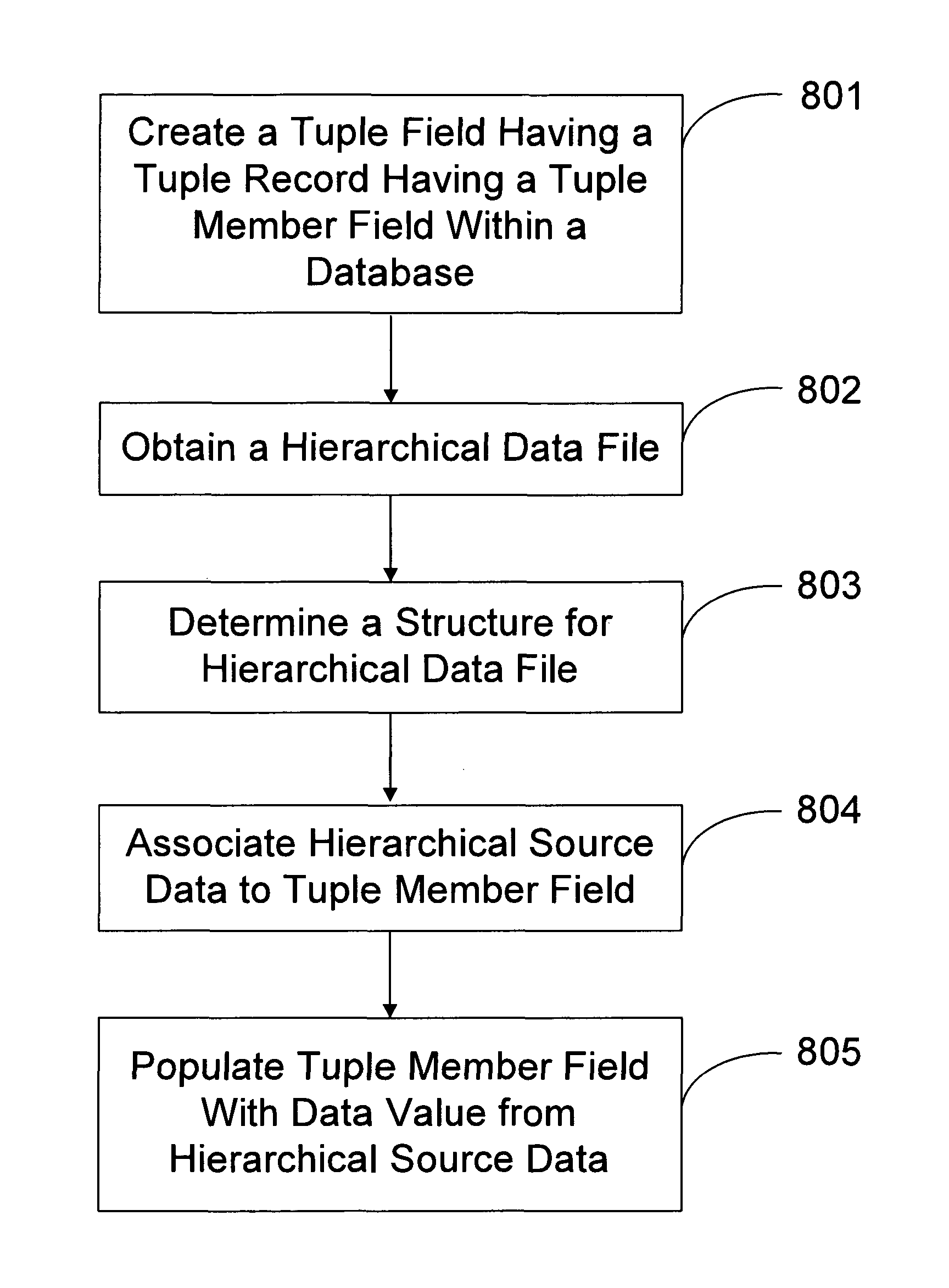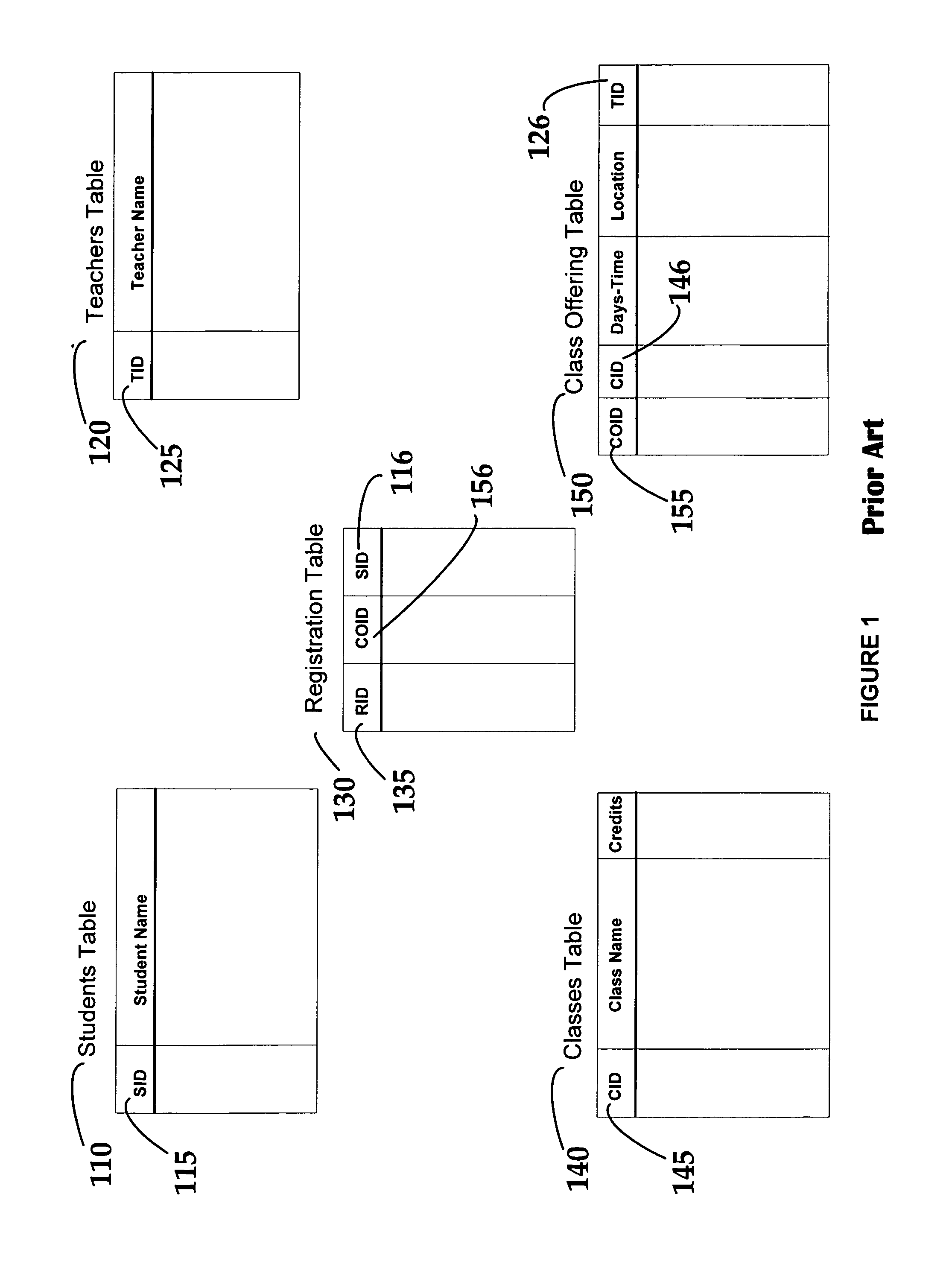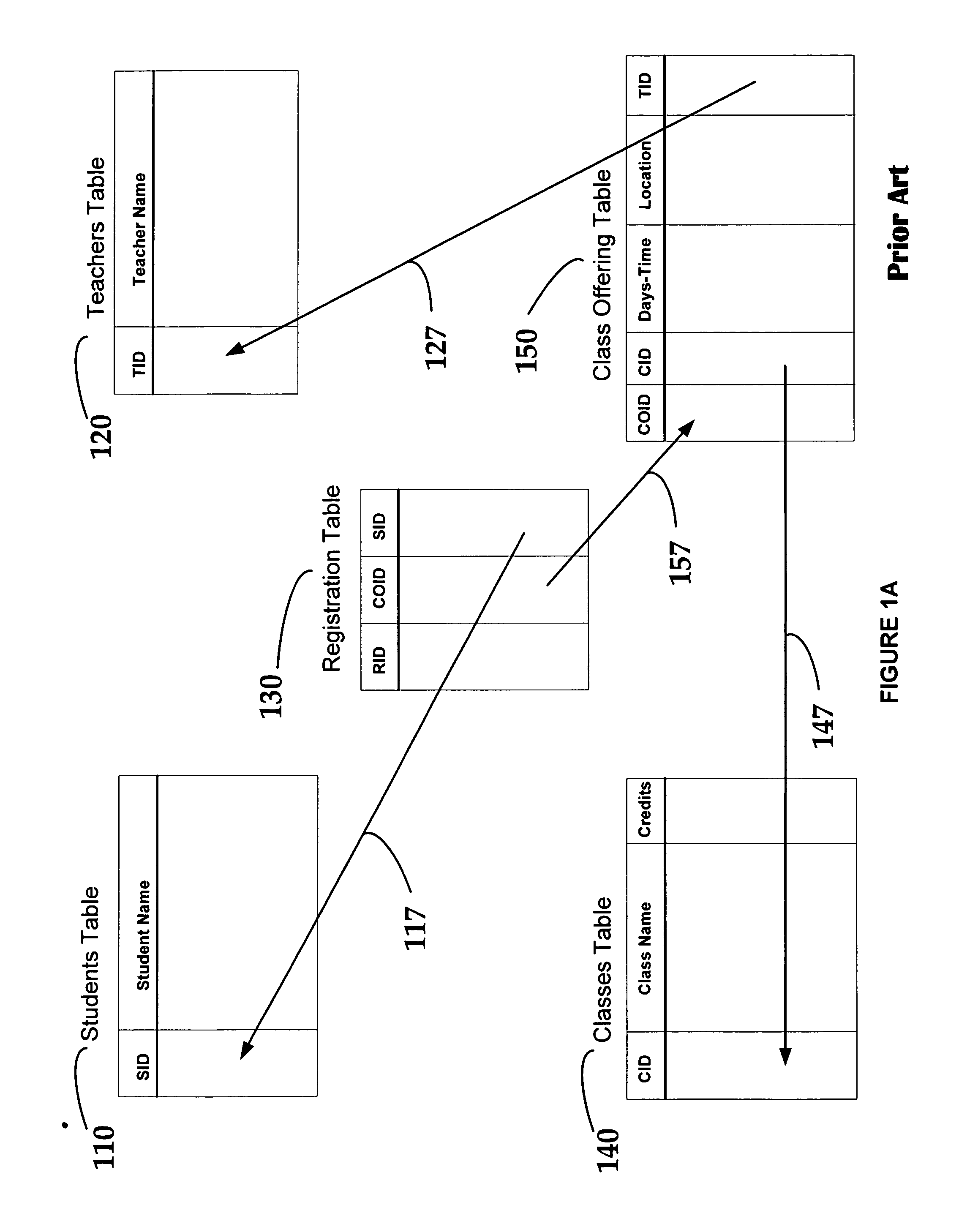Method of representing an XML schema definition and data within a relational database management system using a reusable custom-defined nestable compound data type
a database management system and data type technology, applied in the field of computer databases, can solve the problems of schema design that may require a team of designers with sophisticated design tools and a significant amount of design time, and waste spa
- Summary
- Abstract
- Description
- Claims
- Application Information
AI Technical Summary
Benefits of technology
Problems solved by technology
Method used
Image
Examples
implementation example
[0060]Tuples Implementation Example
[0061]FIG. 5 illustrates the various stages of implementation of a Tuple in one or more embodiments of the invention. A Tuple may first be conceived as a data “type,” as that term may be used in structured programming languages. A schema designer may recognize an advantage to accessing some data in a database in a form that takes advantage of the pure relational aspects of a relational DBMS, with the added ability to reuse the definition in multiple tables across a database schema.
[0062]As introduced above, a Tuple may begin as a set of field definitions for data elements with some relation between them. For example, the contact management information of the prior example would contain field definitions for Street, City, State, Zip and Country for an Address Tuple. Metadata to implement the Tuple may include a Tuple Name, a unique identifier for the Tuple for the Tuple Definition, called a CodeID in one or more embodiments of the invention, a set o...
PUM
 Login to View More
Login to View More Abstract
Description
Claims
Application Information
 Login to View More
Login to View More - R&D
- Intellectual Property
- Life Sciences
- Materials
- Tech Scout
- Unparalleled Data Quality
- Higher Quality Content
- 60% Fewer Hallucinations
Browse by: Latest US Patents, China's latest patents, Technical Efficacy Thesaurus, Application Domain, Technology Topic, Popular Technical Reports.
© 2025 PatSnap. All rights reserved.Legal|Privacy policy|Modern Slavery Act Transparency Statement|Sitemap|About US| Contact US: help@patsnap.com



